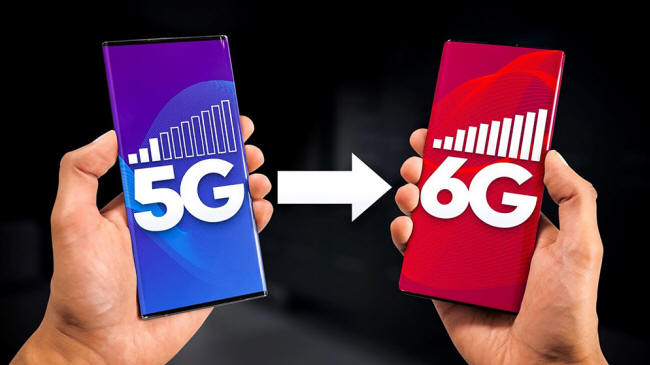|

by Stephen Silver
November 13, 2020
from
NationalInterest Website
|
Stephen Silver, a
technology writer for the
National Interest,
is a journalist, essayist and film critic, who is also a
contributor to Philly Voice,
Philadelphia Weekly,
the Jewish Telegraphic Agency,
Living Life Fearless,
Backstage magazine,
Broad Street Review
and Splice Today.
The co-founder of the Philadelphia Film Critics Circle,
Stephen lives in suburban Philadelphia with his wife and
two sons. Follow him on Twitter at @StephenSilver.
|

Image: Reuters.
Just how fast could it work?
When can you get a 6G phone?
Think
2030s...
Throughout the year 2020, the deployment of
5G networks has
accelerated across the United States, and at the same time most
major smartphone manufacturers have been bringing out 5G phones.
Samsung, LG and
other introduced the phones over the course of 2020, and Apple has
finally brought out
its long-awaited lineup of 5G iPhones this fall.
While there's been
some concern, especially in reviews of new devices, that the
networks aren't quite up to par yet, 5G networks are expected to
become more robust as time goes on, even as
conspiracy theories have spread about 5G being dangerous or even
responsible for the spread of
the Coronavirus.
But just as 5G
arrives, the tech industry is already laying the groundwork for its
eventual successor, 6G.
ATIS, the
Alliance for Telecommunications Industry Solutions (ATIS
- is a governing body) that,
"brings
together the top global ICT companies to advance the industry's
business priorities."
This week, they
announced that they have added some "Founding Members" to its "Next
G Alliance," which it described as,
"an initiative
that will advance North American mobile technology leadership in
6G and beyond over the next decade, while building on the
long-term evolution of 5G."
The new members are
some heavy hitters, including,
Apple, Google,
Intel, Hewlett Packard Enterprise, Charter, Cisco, Keysight
Technologies, LG Electronics, Mavenir, MITRE and VMware.
They join such
existing members from the tech and telecom worlds:
AT&T, Bell
Canada, Ciena, Ericsson,
Facebook, InterDigital, JMA Wireless,
Microsoft, Nokia, Qualcomm Technologies Inc., Samsung, T-Mobile,
TELUS, Telnyx, UScellular and Verizon.
The alliance will
meet next week, in order to form a Steering Group and Working
Group.
"Our Founding
Members represent leading industry stakeholders driving
innovation in the mobile ecosystem," ATIS President and CEO
Susan Miller said as part of the announcement.
"As part of the
Next G Alliance, they demonstrate their commitment to setting
the course to advance North American mobile technology
leadership into the future."
The organization's
goal, per the announcement, is to,
"set the
foundation for a vibrant marketplace for North American
innovation in future generations of mobile technology," and to
"establish North American preeminence in the 5G evolutionary
path and 6G development."
According to a
CNN Business analysis published in early 2020, no one quite
knows at this early date exactly what 6G will look like, except that
it will probably arrive in the 2030s, and that it will be faster
than 5G.
Author Thomas S. Rappaport, of
NYU Wireless, wrote that it's expected,
"6G will usher
in the ability to send wireless signals at the rate of human
computation."
Rappaport added
that,
"6G could mean
that human intelligence could eventually be sent over the air
instantaneously."
|


